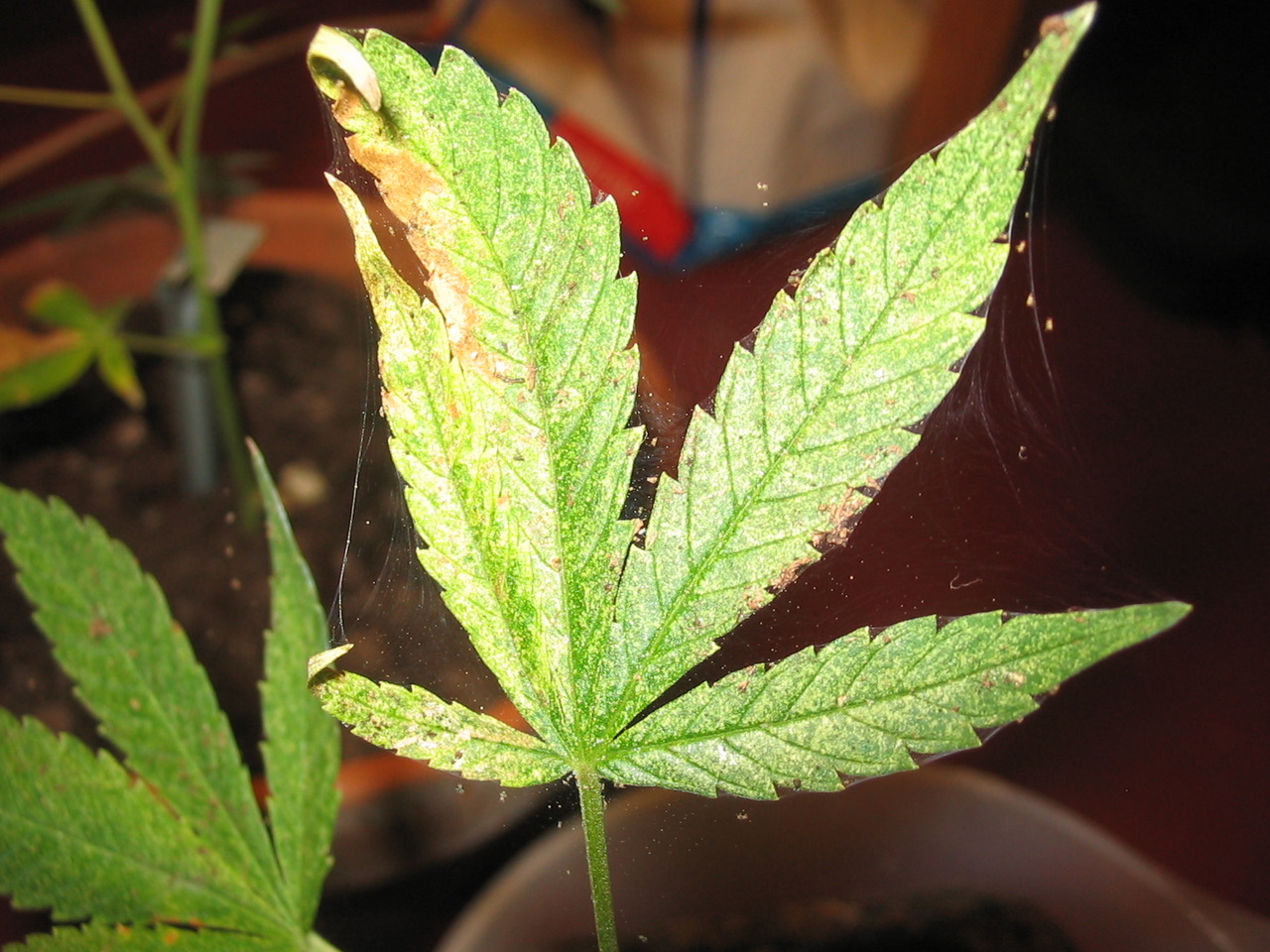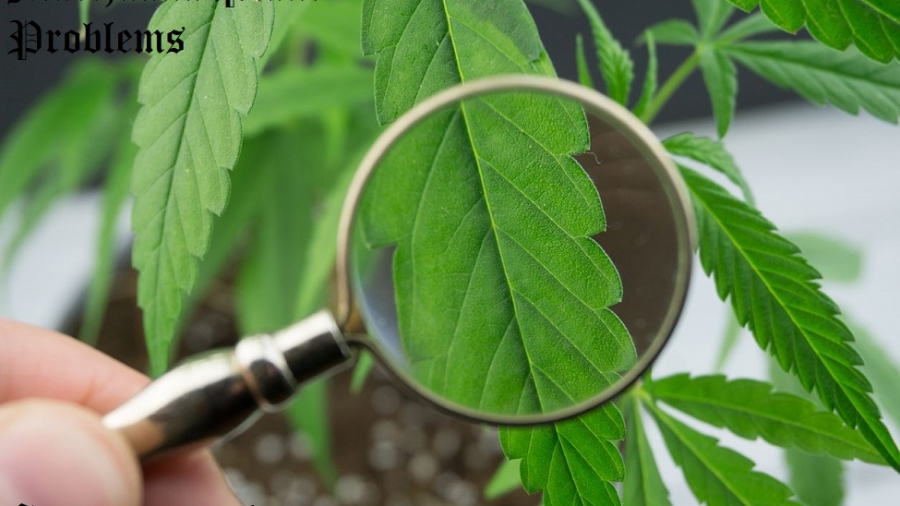This cannabis leaf symptom checker will help you to quickly identify marijuana plant problems and easily diagnose sick marijuana plants!
Learn more about common cannabis leaf problems, nutrients, diseases, stresses, pests, and bugs. Click on any picture for detailed information about a particular marijuana problem, deficiency or symptom and find out what’s wrong with your plant.
No matter how much you care about your plants, there are always things that CAN and WILL go wrong with them in the process of growing. It doesn’t matter if you’re a beginner or a master grower, it is surprisingly easy to slip into a false sense of security with your beloved plants. Truth is, your plants are sensitive beings from seed to harvest.Generally, most problems associated with cannabis growing fall into three broad categories:
- Nutrient deficiencies – which can cause necrosis and chlorosis to your plant which is falling and/or yellowing of the leaves;
- pH fluctuation problems – that are crucial to measure in cases of nutrient deficiency (different nutrients get absorbed by the plants at different pH rates);
- Pests and diseases – that will show up if a plant is faultily nurtured and watered.
In this guide, we will attempt to identify every symptom that you notice on your plants and address every possible problem that might me associated with it.
Simple Tips for Healthy Plants

Quick tips to help prevent and rectify sick marijuana plants.
Avoid Over/Under Watering your Plants
Sounds simple enough? You’d be surprised how important that is to your plants (and how many people are doing this wrong)! In general, plants use their roots to absorb oxygen from water. When you overwater your plants you are practically drowning them in a pool of oxygen-less water. On the other hand, under-watering is practically asphyxiating your plants. In both cases, you are killing your own plants and you should probably stop doing that.
Effects of Over/Under Watering
In both cases, the effects on your plants will be the same: the leaves will start curling down and flopping all the way to the stem. Your plant will look lifeless and frail.
What to do
This is one of the most common newbie problems, and not just for cannabis growers. Luckily, its effects are easily reversible. For plants that have been over-watered, you just need to give some time without any water, until things start to stabilize. You can also help your plants by increasing the temperature or aerating their environment by poking a few holes in the soil, to increase the flow of air (if you’re growing in soil, that is). A good way to know whether your plants need water is by touching the topsoil. If it feels dry, then it might be time to pour your plants a drink.For under-watered plants, you will notice that the pot of the plant will feel significantly lighter when picked up. That’s because all the water inside the soil has been used up. You can even use the “second container” method to determine how heavy your vessel exactly needs to be: just fill a similar second pot with the same (dry) growing medium and use it as a standard to determine just how dry your plant really is.
Temperature Regulation Problems
Chances are, your plants’ ancestors have travelled far and wide to be with you. Some strains include genetics that thrived in climates much different than yours. For example, Durban Poison grows on the streets in South Africa but needs special care in the US. Similarly, it doesn’t take much thought to deduct that a plant that thrives in Panama, might not feel all that comfortable in Portland, Oregon. While this is much less of a problem for indoor growers, where temperatures are much more controllable, fluctuations in temperature can play a major role in plant development. Luckily, this is also one of the factors that can be easily monitored and controlled by the grower.
Effects
While this is a multi-layered problem with many variables to take into consideration, the plants generally prefer a temperature around 70-85°F (20-30°C) during the day and they can be quite comfortable with slightly lower temperatures in the night. Younger seedlings in their vegetative stage require a slightly higher temperature.Colder temperatures might lead to poor phosphorous absorption that can halt the development of your plants. You can easily spot signs of under-temperature plants by a deep-purple pigmentation on the leaves. Some plants that are grown in temperatures under 60ºF (15ºC), can freeze to death overnight. While it is largely a matter of genetics and there are strains that can indeed survive, their development will be severely hindered.
On the other hand, too hot environments can also lead to problems. You will notice that your plant is too hot when its leaves start cupping (folding). Overheating is usually not fatal (as opposed to colder temperatures), but will also delay plant growth, while leaving it susceptible to mold, bugs and burning of the leaves. Also, terpenes, the cannabinoids that are responsible for the smell and taste of your plants, can be burnt out at high temperatures.
What to Do
The first step in understanding how suitable your environment is for your plants, is by using your senses. Plants generally prefer similar temperatures to us humans, so if your room feels too cold or too hot, it probably is. Other than that very practical advice, you can do lots of things to ensure the optimal temperature for your plants. The very first of which should be to go get a great thermometer.
If your environment is too warm
- Invest in a proper ventilation system. Not only will you regulate temperatures more effectively, but you will also improve air circulation which is crucial to the well-being of your plants.
- Use LED Grow Lights. Their usefulness has been much debated over forums and magazines the last few years, but the general consensus is that a good set of LED grow lights can provide full spectrum lighting for your plants and lower energy costs, while at the same time running at much cooler temperatures. For the best grow lights on the market, consult our in-depth LED grow lights guide.
- Modify your plants lighting schedule. Different strains have different lighting habits during different growth stages with which you should become familiar (more research about each strain’s preferred light cycle can be found on our massive strain database.
- Get an A/C unit. Although most of the above methods will most likely fix your heating problems, if issues persist a good old A/C unit might work wonders in regulating the temperature of your grow room.
If your environment is too cold
- If your grow room is in a room that can be insulated, insulating it would be your best bet. However, we know that this is not always possible. Therefore, you might need to invest in a dedicated grow box or grow tent (preferable for larger rooms). This should act as a very adequate insulation to your plants. Here on HTG we have extensively covered the pros and cons of both solutions and you can find in-depth articles about all the latest models in the above links.
- Proper ventilation is equally important, to distribute heat evenly.
- Invest in a heater with a thermostat. This is advised for extreme cases only, however if you have to get a heater, be sure that it has a thermostat. Also, never, ever have your heater blow hot air directly at the plants.
Eutrophication (or Nutrient Burn)
As you might have gathered by now, plants love balance. They are sensitive to the extreme lengths over-eager growers can go in order to produce more, faster. In the final part of this chapter, we are going to inspect the problem of feeding your lovelies too much. If you tend to over-feed your plants like an over-protective parent, you’ll end up doing more harm than good. Contrary to what you might instinctively think, young plants do not require a lot of fertilizer. In fact, in the first month of growing, you should only use a quarter of the normal dosage for your plants, and then gradually step it up.
Effects
The leaves of your plant start to fold in the middle and feel more hard. You might also notice gray and brown pigments on the blade of the leaf. In severe cases, the leaves turn golden brown and then die.
What to Do
Be sensible with the amounts of fertilizer you use. If you observe any of the above signs on your plants, cease fertilization for a few days and resume when the symptoms recede. For more severe cases, a thorough wash of the pot with pH regulated water is advisable. Clean the soil with 5x the amount of your pot’s volume (e.g. 25lt of water for a 5lt pot). Pour the water in the pot, one gallon at a time, wait and repeat.
Nutrient Deficiencies

Now that we have covered some of the very basic concepts of plant caring, it is time to delve deeper into the vast topic of nutrient deficiencies that can affect your plants. Nutrients are all-too-important for your plants; they are the basis of their existence and, much like you, the plants need to receive them in a healthy amount, in order to produce their THC filled goodness. Below you’ll find a list of all the nutrients your plant needs in order to survive and flourish.
Essential mineral macronutrients (soil):
- Nitrogen (N);
- Phosphorus (P);
- Potassium (K);
- Calcium (Ca);
- Magnesium (Mg);
- Sulfur (S).
Non-mineral elements derived (air/water):
- Carbon (C);
- Hydrogen (H);
- Oxygen (O).
Fertilizer bags and nutrient supplements, often feature three numbers in their packaging, that indicate the quantity of the three main elements (N, P and K) is contained in the product. The number are always listed in this order: N – P – K.However, these are not all; there is also a plethora of micro-nutrients that play a variety of roles in plant growth and development:
- Zinc (Zn);
- Iron (Fe);
- Manganese (Mn);
- Molybdenum (Mo);
- Chlorine (Cl);
- Cobalt (Co);
- Silicon (Si);
- Boron (B);
- Copper (Cu).
Although they are called “micro” nutrients and are indeed used in much lower amounts, make no mistake: these minerals are crucial to a plants’ health and many of the problems that we will see in detail below, are directly associated with insufficient amounts of said micronutrients in the growing medium. Generally, it is a good idea to obtain a reliable electronic pH tester, as these measurements are going to prove extremely useful to you during the whole growing process. All nutrient deficiencies are tied to pH level fluctuations both in soil or hydroponic setups, so it is important that you get these right.

Hello. Can you please do a feature on spider mites, I have been suffering from this relentless creature that survives all can throw at them. Thanks in advance!